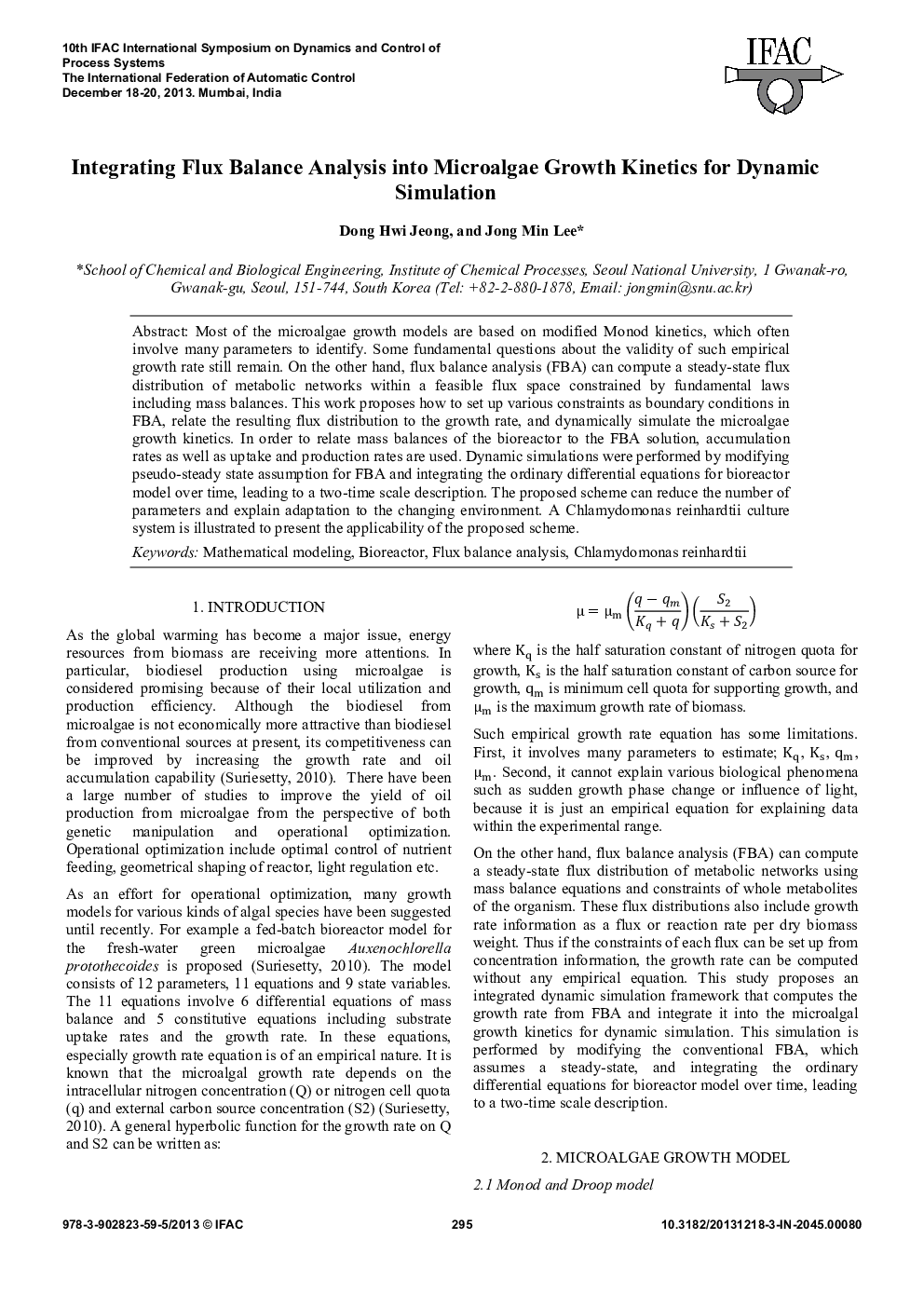| Article ID | Journal | Published Year | Pages | File Type |
|---|---|---|---|---|
| 713677 | IFAC Proceedings Volumes | 2013 | 6 Pages |
Most of the microalgae growth models are based on modified Monod kinetics, which often involve many parameters to identify. Some fundamental questions about the validity of such empirical growth rate still remain. On the other hand, flux balance analysis (FBA) can compute a steady-state flux distribution of metabolic networks within a feasible flux space constrained by fundamental laws including mass balances. This work proposes how to set up various constraints as boundary conditions in FBA, relate the resulting flux distribution to the growth rate, and dynamically simulate the microalgae growth kinetics. In order to relate mass balances of the bioreactor to the FBA solution, accumulation rates as well as uptake and production rates are used. Dynamic simulations were performed by modifying pseudo-steady state assumption for FBA and integrating the ordinary differential equations for bioreactor model over time, leading to a two-time scale description. The proposed scheme can reduce the number of parameters and explain adaptation to the changing environment. A Chlamydomonas reinhardtii culture system is illustrated to present the applicability of the proposed scheme.
